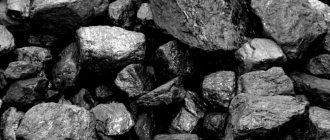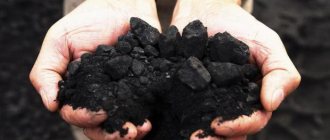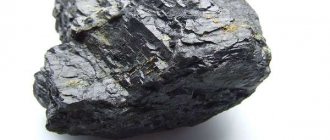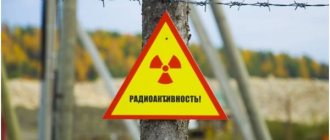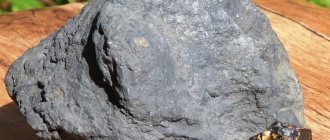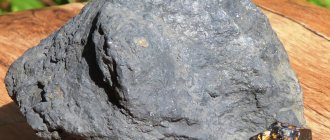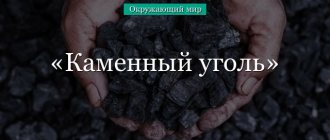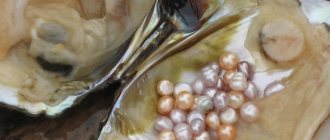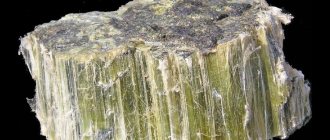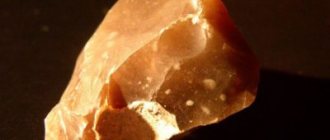Anthracite is a type of high-quality fossil coal. It is characterized by a high level of metamorphism (the degree of solid phase and structural mineral change).
Like other types of fossils, anthracite coal is formed over many millennia from plants that were without oxygen under layers of soil. Over a significant period of time, they were subject to the processes of carbonization and humification. This was the reason for the formation of this substance. Carbon gets its international name from the word carbon - coal. This is a reliable fact. Anthracite is the highest quality type of coal. It is also called carbuncle.
Features of the formation of this fossil
Several processes are taken into account here. Anthracite is formed in a certain order. First, peat is formed, and then brown coal. Further, under certain influences, this fossil transforms into another substance. Namely, hard coal and anthracite. In the latter case, this is a transition link to graphite.
Anthracite (coal) occurs at a depth of about 6 km. Places where these fossils often self-form are characterized by peculiar shifts in the earth's crust. These are mainly spurs of the mountains.
The most numerous anthracite deposits are located in the coal basin in the Donetsk region.
Anthracite coal: product characteristics
In this case, there are many certain nuances. Anthracite (from the Greek anthrakitis) is a humic fossil coal. It has the highest degree of metamorphism. When observing it under a microscope, it is clear that plant remains are difficult to distinguish. Anthracite is coal that is black in color, often with a grayish tint. Sometimes variegated tarnish is also found in its color. It gives a black velvety line on a porcelain plate. Anthracite (coal) is also characterized by a strong metallic luster. It has high viscosity, does not sinter, and has good electrical conductivity. Its highest hardness on the mineralogical scale is 2.0-2.5, organic mass density is 1500-1700 kg/m3. Its heat of combustion is 33.9-34.8 MJ/kg (8100-8350 kcal/kg). It has an analytical low humidity of 1-3% and contains in the combustible mass up to 9% of volatile substances, 93.5-97.0% carbon, 1-3% hydrogen, oxygen and nitrogen 1.5-2.0%. This is a definite fact. This fossil, which contains more than 97% carbon in its combustible mass, is called superanthracite. Based on the volumetric yield of volatile substances, this product is divided into two industrial grades. Namely: with the presence of 220-330 l/kg - these are semi-anthracites, and with a volumetric output of less than 220 l/kg - anthracites.
Anthracite coal is the oldest and highest quality fossil coal, the reserves of which account for only three percent of the total world coal reserves. Anthracite has a high degree of carbonization: its carbon content is 95%, due to which anthracite coal burns without flame, without emitting smoke or odor. In color it can be either velvet or iron-black and always with a steel sheen. Anracite coal is widely used in many industrial areas, and for domestic needs as coal for heating residential premises, used as fuel in boilers and stoves using solid fuel. The largest deposits of anthrancite are concentrated in the Donbass basin in Ukraine.
Burning Anthracite - Anthracite coal requires more heat and effort to ignite, but once ignited, it burns longer than WPC coal. Anthracite burns only with strong air draft. Moreover, it burns either with almost no flame or sometimes even without it at all. It is also worth noting that anthracite burns not only without flame, but without smell and without smoke. But at the same time it does not sinter. According to its characteristics, anthracite is harder than stone and brown coal. Although, like them, it is a product of the slow decay of plants and is obtained from what they form after decomposition.
The specific heat of combustion of anthracite (calorie content) averages 8100 - 8350 kcal/kg.
Anthracite coal is divided into the following grades depending on the size of the fractions:
- AKO - Anthracite fist walnut (fraction size 26-100 mm)
- AK - Anthracite fist, coarse coal (fraction size 50-100 mm)
- AO - Anthracite walnut (fraction size 26-50 mm)
- AM - Anthracite fine (fraction size 13-25 mm)
- AS - Anthracite seed (fraction size 6-13 mm)
- Ashlam - Anthracite sludge - coal enrichment product
- AS - Anthracite chip (fraction size less than 6 mm)
If you need coal for stoves or coal for boilers running on solid fuel, then the most suitable varieties of anthracite are AK, AK and AKO. You can buy anthracite of these brands from our company. The use of anthracite as coal for heating is due to its high calorie content. In addition, the burning time of anthracite is several times longer than that of WPC. This makes it possible to leave the stove in a hot state throughout the night, or even during the day if anthracite is used in smoldering mode. However, before doing this, you need to light the anthracite coal. Our advice is to light the stove using ordinary firewood, then pour Long-flame coal into the stove, which ignites easily and also burns out quickly. However, this time is enough to ignite the anthracite. After anthrancite flares up, natural draft is enough to maintain it in smoldering mode. This will allow your stove or boiler to remain hot for a long time and heat the premises.
Anthracite is mined in mines at a depth of up to 1,500 m; from the mine, coal goes to coal processing plants where anthracite is enriched and sorted into fractions, and then supplied to subcutters.
Anthracite coal is the densest of all types of coal, which allows it to occupy a leading position in the class of heat transfer and combustion time of coal. If you buy anthracite coal for heating, you will need a significantly smaller amount to heat the same area than when using other brands of coal or firewood. But despite the undeniable advantages of anthracite coal, there are also disadvantages. Due to the high density of anthracite coal, it is not capable of igniting in all types of furnaces or boilers. For normal combustion of anthracite, a good air supply is required, usually forced in modern solid fuel boilers. Less dense coal includes: long-flame coal and low-caking coal.
In terms of its calorific value, Anthracite coal surpasses all hard coals - 8200 kcl/kg, for comparison, natural gas is 7000 kcl/kg. Anthracite coal is the hardest of all coals; only up to 5% of volatile substances are released during combustion. Anthracites are used in various fields of human activity - in industrial production (metallurgy, sugar industry, chemistry, etc.), in the public sector (heating, water heating, etc.), for individual heating, and also from anthracites to make filtrants for water purification, drains, etc.
Anthracite (from the Greek anthrakitis - a type of coal), fossil humus coal of the highest degree of metamorphism. Under a microscope, plant remains are difficult to distinguish. The color of anthracite is black, often with a grayish tint, and sometimes a variegated tarnish is observed. On a porcelain plate it gives a velvety black line. The shine is strong, metallic. It has high viscosity, does not sinter, and has good electrical conductivity. The highest hardness on the mineralogical scale is 2.0-2.5; organic mass density 1500-1700 kg/m3. The heat of combustion of organic mass is 33.9–34.8 MJ/kg (8100–8350 kcal/kg). A. has a low analytical moisture content of 1-3% and in the combustible mass contains up to 9% volatile substances, 93.5-97.0% carbon, 1-3% hydrogen, 1.5-2.0% oxygen and nitrogen. Anthracite with a carbon content in the combustible mass of more than 97% is called superanthracite. Based on the volumetric yield of volatile substances, it is divided into 2 industrial grades: semi-anthracites with a content of 220-330 l/kg and anthracites proper with a volumetric yield of less than 220 l/kg.
Advantages of the said fossil
This product is the highest quality type of coal produced. It differs significantly from other types, as it has the following parameters:
- High content of fixed carbon. In this case it is 94-99%.
- Low sulfur content.
- High specific heat of combustion.
- Low moisture content.
- Burns without smoke or flame.
- Burns out quickly.
- High density organic mass. In this case, 1500-1700 kg per square meter.
- The specific gravity of anthracite coal is 1.5-1.7.
- High electrical conductivity.
In addition, anthracite coal, the photo of which is provided in this text, does not sinter during combustion. Its hardness according to the mineralogical scale is 2.0-2.5. Another significant advantage is that when anthracite burns, only up to 5% of volatile substances are released into the air.
This type of fossil has calorific values superior to any other coal, namely: 8200 kilocalories per kilogram. By comparison, gas has a calorific value of 7000 kcal/kg.
What types are this fossil divided into?
Anthracite coal is a high-carbon product. This was discussed above. This and a number of other characteristics play a role in determining its scope of use. According to size classes, minerals such as anthracite coal are classified (GOST 19242-73). Separation is carried out according to the size of the fractions of a given product. Namely:
- “AKO” – anthracite fist, walnut. In this case, fractions with a size of 26-100 mm are taken into account.
- “AK” – anthracite coarse coal, fist. This includes fractions whose size is 50-100 mm.
- “AO” – anthracite nut coal. The size of the fractions is 26-50 mm.
- "AM" is fine anthracite. In this case, fractions of 13-25 mm are taken into account.
- “AS” – anthracite seed coal. This includes fractions with a size of 6-13 mm.
- “Ashlam” is anthracite sludge. It is a kind of coal enrichment product.
- “ASH” – anthracite shtyb. In this case, the fractions are less than 6 mm.
Anthracite mining is carried out in the appropriate mines. They have a depth of up to 1500 m. Then the coal from the mines is supplied to enterprises for its processing. There it is enriched and sorted into fractions. After this, coal in bags (anthracite) is supplied to various consumers.
This product is sold both in regular form (AR) and in enriched concentrated form. The specified mineral under the brands “AM” and “AKO” are identical in properties. Although fine type coal has a higher resistivity.
Meaning of the word anthracite
Examples of the use of the word anthracite in literature.
But since the West and East in the Antiworld are located opposite to ours, then everything happens apparently normally, but this does not make it easier for anyone, because the Sun in the Antiworld is also not the Sun, but natural shit: it is Black like Anthracite, and not only that itself does not give any light, but on the contrary, it brutally sucks it in from everywhere.
People who live outside of Pennsylvania have no idea that there are two types of coal in the world: anthracite and bituminous coal, which are also developed very differently.
The anthracite region, unlike the bituminous coal region, is a stronghold of trade unions.
I will still look for approaches, Helen, at every corner I will ask for directions, I will take everything into account - the square with the trams, Nicole, the brooch that you were wearing on the night of the Saint-Martin Canal, Monsieur Ochs's dolls, the ghost of Frau Martha on the Blutgasse, the important and no matter, I will shuffle everything again to find you the way I want - I will shuffle a randomly bought book, a garland of light bulbs, even a block of anthracite that Marrast was looking for in the north of England, a block of anthracite for the statue of Vercingetorix, ordered and half paid for by the municipality of Arkeil13, much to the chagrin of well-meaning townspeople.
Days in London passed for Marrast in similar entertainments, because after the first tedious demarches he terribly did not want to deal with a block of anthracite, and, returning to France, he immediately had to begin creating a statue of the imaginary Vercingetorix, half already paid for by the municipality of Arqueil, but which due to the lack of a suitable piece of anthracite, he could not begin.
Oh yes, Marrast has a lot of merit, thought Marrast, sipping his sixth glass of juniper, which was brought to him not without hesitation, although the real merit would be to tell everything to hell and devote himself exclusively to a block of anthracite, to completely fill the damned hole by throwing a block of anthracite into it , which Mr. Whitlow is looking for in the mines of Northumberland, rush at it with hammer and chisel, as Hamlet threw himself into the hole called Ophelia, carve the figure of Vercingetorix in the very thickness of the former hole, denying it and destroying it with blows of the hammer, and labor, and copious sweat , and red wine, to open, damn it, a period exclusively filled with anthracite and ancient heroes, without red houses, without kindly donated puzzles, without gnomes drying on the table.
The discoverers of Pellucidar, David Innes and Abner Perry, discovered it completely by accident when they went looking for anthracite deposits on a mechanical prospector invented by Perry.
Alyosha laughed it off: “Pervorechensky: he lay in the furnace for nine months, was born through a smokestack, was bathed in Suchan coal instead of water, covered with slag, fed with fuel oil, fed with anthracite—a warrior for all.”
The spring evenings were delightful, the dirt sparkled like anthracite under the moon, and all the youth of the city were so in love with the secretary of the local communal committee that it prevented her from collecting membership dues.
In its underground chamber, a huge furnace under the boiler, gathering its strength, swallows at once a quarter of a ton of hard, shiny coal - Pennsylvania anthracite, ancient lepidodendrons, pure compressed time.
They won’t let you dig hard metals anyway, but anthracite is about your speed.
Take care of him, Gru,” came from there, “anthracite first, and no food while working.”
Why don’t we dare to eat anthracite dug out by our own weary hands?
Before the army, we worked in the cities of Krasnodon, Krasny Luch, Antratsit, Rovenki.
For anthracite, without saying a word, they pay from seventy to eighty marks, how could he miss such an opportunity!
Source: Maxim Moshkov library
Application of anthracite
This product is quite popular. Anthracite is the densest type of coal. This allows it to occupy first positions in terms of heat transfer class and combustion time. If you buy anthracite (coal) for heating, then you will need much less of it to heat the same area than if you use a similar product of a different type or firewood. Despite all the advantages of this fossil, it also has disadvantages. Possessing significant density, it is not capable of flaring up in all types of boilers and furnaces. This is important to know. For good combustion of anthracite you will need a good air supply. Basically, in modern types of solid fuel boilers it is forced. Lower-density types of coal include: low-caking and long-flame coal.
Anthracite, due to its calorific qualities, is superior to other analogues. This parameter is 8200 kcal/kg. For example, natural gas – 7000 kcal/kg. Anthracite is coal that is the hardest of all its analogues. During combustion, volatile substances are released only up to 5%. Anthracite is used in various spheres of human activity. Namely: in industrial production (chemistry, metallurgy, sugar industry, etc.), in the public sector (water heating, heating, etc.). It is also used for heating private households. This mineral is also used to produce filtrants, which are used to purify wastewater, water, and so on.
Anthracite: general information
Anthracite is a very high quality fossil coal.
It is characterized by high metamorphism, that is, the degree of structural mineral change. Coal metamorphism is the process of changing the chemical composition of organic matter at the stage of its transformation from brown coal to anthracite. The restructuring of the structure during metamorphism occurs with an increase in the carbon content in the substance and a decrease in the oxygen content. Like other types of minerals, anthracite is formed over many thousands of years from the remains of plants that are located under layers of soil without access to oxygen. Anthracite owes its formation to the processes of carbonization and humification, which occur over long periods of time. This type of coal is considered to be of the highest quality.
Anthracites in the power industry
In this area, the application of the said product is also essential. Screenings from anthracite, which have a high ash content of class 0-13, are widely used as fuel in the electric power industry. In this industry, this mineral is used due to its low content of volatile substances. In the electric power industry, special equipment is used to burn anthracite.
For pulverized combustion of this product, specially designed furnaces are also required. Their configuration is quite peculiar. It must ensure complete combustion of the specified fossil during the time it is in a special combustion zone.
Coal with fine fractions and low content of sulfur, nitrogen and phosphorus is used in special boilers that are designed for this. This small-sized product is also used in cement kilns.
Anthracites in metallurgy
This mineral has also found its application in this area. In metallurgy, anthracite is used for sintering iron and limestone. Blast furnace and electric steelmaking processes do not adequately control the amount of harmful substances released into the atmosphere. Therefore, the use of this high-quality fuel by default makes metallurgical processes more environmentally friendly.
In addition, this small-type mineral is used in the production of high-carbon steels for secondary carburization. Anthracite can also be used in blast furnaces with PCI (Pulverized Fuel Injection) systems. The main indicator here is the moisture content of the coal that is supplied.
In this case, the specified fuel can be blown into the blast furnace as a piece. This technology is very well used in Western European countries, as well as in Asia - China, Japan, Korea. In Russia and Ukraine, this method is only gaining popularity.
In the metallurgical industry, coal is also used as a metal reducing agent.
Anthracite reserves code
World anthracite reserves (so-called recoverable resources) according to 2009 data (including Canada, which is not yet developing reserves) amount to about 24 billion tons.
In 1980, world reserves totaled 28.2 billion tons; Russia had 14 billion tons of anthracite.
Total anthracite reserves account for 1% of world coal reserves (as of 2006).
Anthracite occurs in layers of varying thickness, usually at medium and shallow depths, in sediments of many geological systems. In terms of reserves (as of 2009), Russia is in 1st place, followed by China, Ukraine and Vietnam. The largest producer of anthracite is China, other significant producers are North Korea (mainly for domestic consumption), Russia, Ukraine, Vietnam, Poland, England, Australia, and the USA.
Main anthracite producing countries, 2009.
| A country | Remaining estimated recoverable reserves (million tons) | Nominal production level (million tons/year) | Remaining development period (years) |
| China | 6080 | 275 | 22 |
| Russia | 6870 | 9 | 763 |
| Ukraine | 5790 | 20 | 290 |
| Vietnam | 2260 | 40 | 57 |
| North Korea | 1530 | 22,5 | 68 |
| South Africa | 710 | 2,5 | 284 |
| South Korea | 240 | 2,8 | 86 |
| Spain | 200 | 3,5 | 57 |
| USA | 60 | 1,6 | 38 |
| Poland | 10 | 0.0 | 253 |
The main coal basins: Pennsylvania (USA), Alberta (Canada), Witbank (South Africa).
In Russia and the CIS, anthracites have been identified in the Grushevsky (cities of Shakhty, Novoshakhtinsk, Zverevo, Gukovo, Rostov region), Kuznetsk, Taimyr, Tunguska basins, as well as in coal basins and deposits in the Urals and Magadan region. The presence of highly metamorphosed coals, including anthracite, is known in the Kuznetsk, Pechora, and Uzgen basins and in the Kugitang deposit (Turkmenistan). In Ukraine - in the Donbass (Donetsk and Lugansk regions).
Alternative high carbon raw materials
The coal market is traditionally divided into two segments. These include energy and coke production. Price trends for products depend on the segment and other factors. And often they are different.
Anthracite is a unique product that is successfully present in two segments. In addition, it still occupies a significant place in the specialized market for technological use. The price dynamics for a similar product in different segments may differ, that is, in this regard, redistribution occurs. For example, if the cost of one segment for anthracite falls, then for another it, as a rule, increases.
Anthracite successfully competes with graphite, charcoal, and petroleum coke. As a result, the range of prices for them will depend on the cost of electrical energy, metal products, and so on. This is important to remember. In addition, the price of anthracite will be influenced by the state of the world economy. However, over the past decade, constant growth dynamics have been noticeable.
